Bangkok
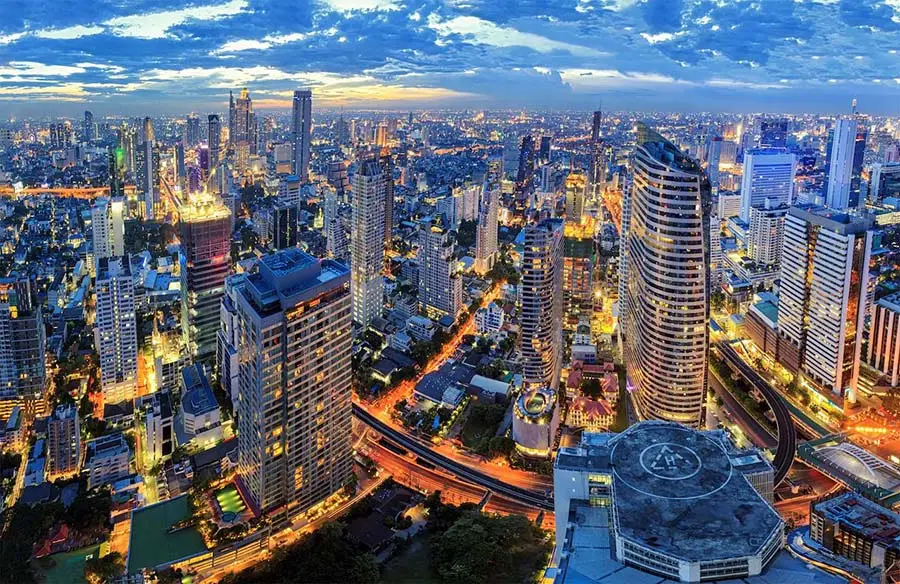
Updated: October 2025
If you’ve ever stepped out of Suvarnabhumi Airport and felt that warm, chaotic, slightly sweet Bangkok air hit your face — you know you’ve arrived somewhere unforgettable. I was there this summer, walking through the endless buzz of the city, where motorbikes weave through traffic like it’s an art form, and the locals somehow stay calm, smiling, and graceful through it all. This is Bangkok — a city that never sleeps, yet always finds time to smile.
Go to: Temples | Food | To Do | Cultural Tips | Where To Stay | Itineraries | FAQ
🇹🇭 Bangkok Travel Snapshot (2026)
🕰️ Best Time to Visit: November to February (cool, dry season)
🛕 Top Temples: Wat Pho, Wat Arun, Grand Palace
🍜 Must-Try Street Food: Pad Thai, mango sticky rice, boat noodles
💰 Daily Budget Range:
Budget: $30–50
Mid-range: $70–150
Luxury: $200+
🚆 Best Ways to Get Around: BTS Skytrain, MRT, Grab, river boats
🌿 Hidden Gems: Bang Krachao, Jim Thompson House, Wat Paknam
🎉 Nightlife Hotspots: Sukhumvit, Khao San Road, rooftop bars
First Impressions: Organized Chaos with a Smile
Bangkok hits you with sensory overload from the very first minute — the smell of grilled satay, beeping tuk-tuks, neon signs, and the golden roofs of temples peeking through skyscrapers.
It feels chaotic, yes, but there’s a rhythm beneath it — a kind of urban meditation in motion.
I remember standing in traffic on Sukhumvit Road for what felt like an eternity. Everyone was waiting patiently — drivers, passengers, monks in orange robes — and yet no one honked aggressively. Instead, people smiled, exchanged little wais (Thai greeting), and went on with their day. That’s Bangkok’s magic — busy, loud, alive, but somehow peaceful at heart.

Temples That Will Steal Your Heart
Bangkok has over 400 temples (wats) — and if you’re not careful, you’ll burn through your camera battery before lunch.
Wat Pho (Temple of the Reclining Buddha)
If you visit only one temple, make it Wat Pho. The 46-meter golden Buddha is breathtaking, but what makes it special is the calm energy around it.
I watched locals drop coins in the long line of bronze bowls — one coin for each prayer. The sound echoed softly through the hall, a peaceful contrast to the chaos outside.
Wat Arun (Temple of Dawn)
Across the Chao Phraya River, Wat Arun shines like porcelain when the sun hits its spires. I went early in the morning — the light was soft, and the only company I had were a few monks sweeping the courtyard. If you climb the steep stairs, the view of the river is unforgettable.
Wat Phra Kaew & The Grand Palace
Yes, it’s touristy. Yes, it’s crowded. But it’s also Thailand’s spiritual heart. The Emerald Buddha sits in a room so ornate it feels like time stands still. Just remember: wear long pants, covered shoulders, and respect the silence — this isn’t a photo zone, it’s a sacred space.
If temples fascinate you, check my deeper dive into Thailand’s Most Beautiful Temples:
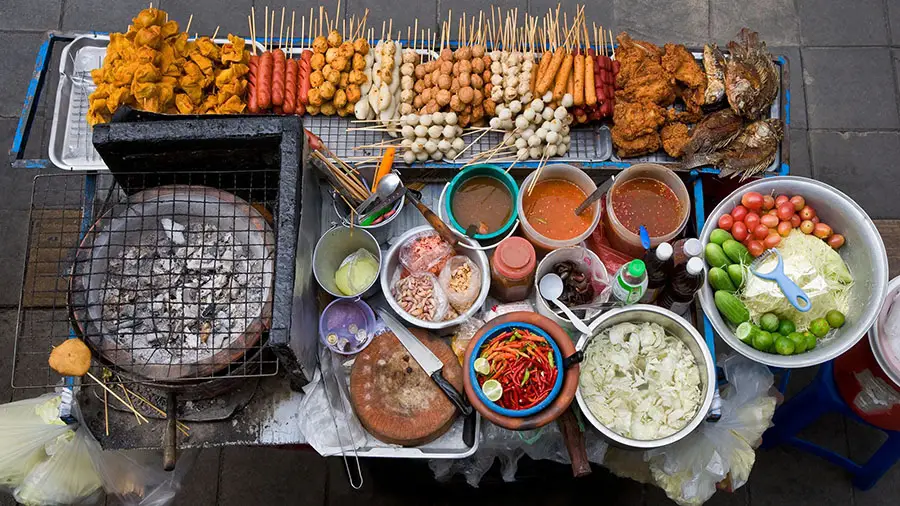
Eating in Bangkok — Street Food or Michelin Star? Why Not Both!
Bangkok’s food scene is a rollercoaster of flavor.
One night, I was sitting on a tiny plastic stool at a street stall, eating spicy papaya salad that made my eyes water. The next evening, I was at a rooftop restaurant overlooking the skyline, sipping coconut water from an elegant glass.
Here’s what not to miss:
Pad Thai at Thip Samai — still the best I’ve ever had.
Boat noodles at Victory Monument — rich, spicy, and unforgettable.
Mango sticky rice at the market behind CentralWorld — perfect balance of sweetness and salt.
Yaowarat (Chinatown) — walk, eat, repeat.
👉 For a full guide, read my post: Thai Food: The Ultimate Guide and Why You’ll Love It!
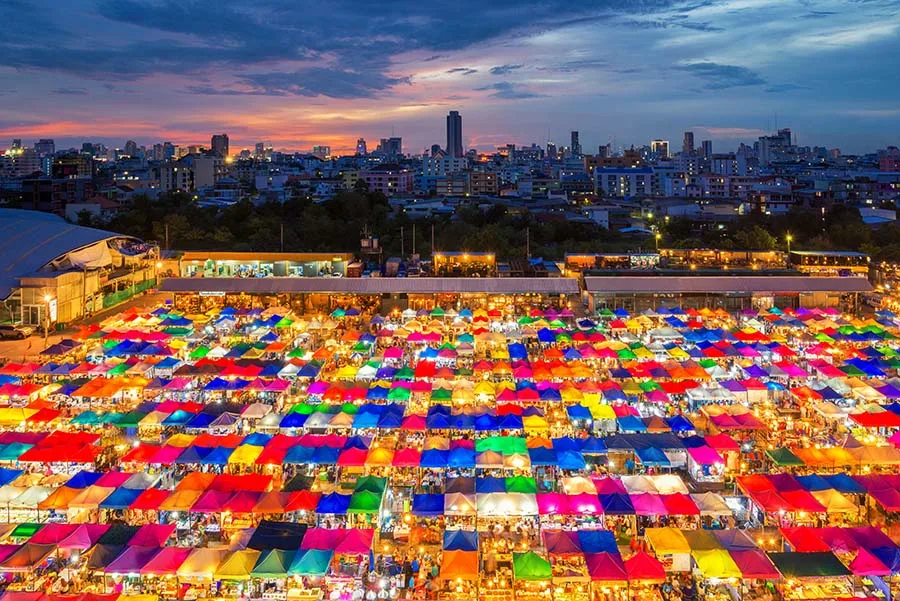
Top Things To Do in Bangkok
You could spend a week here and barely scratch the surface. But here are the musts — whether it’s your first visit or your fifth:
1. Cruise the Chao Phraya River
Take a public boat or a sunset dinner cruise. The city looks entirely different from the water — temples, skyscrapers, bridges glowing in gold.
2. Explore Chatuchak Market
Over 15,000 stalls of everything you can imagine — clothes, plants, art, and the most random things ever (I once saw someone selling old typewriters next to live turtles).
Bring cash, water, and a big smile.
3. Ride the Skytrain (BTS)
Yes, it’s public transport — but clean, efficient, and the easiest way to escape traffic. And you’ll get amazing skyline views while moving above the chaos.
4. Visit Jim Thompson House
A peaceful corner of Thai history. Traditional architecture, silk craftsmanship, and a mysterious story of the man who disappeared in Malaysia.
5. Experience Bangkok by Night
From the iconic Khao San Road to classy rooftop bars like Vertigo or Octave — Bangkok after dark is pure magic.
For a coastal escape from the city heat, check out my guide to Krabi or Koh Lanta.
Cultural Tips and Local Etiquette
Thailand values respect — and you’ll feel it everywhere. Here are a few golden rules I’ve learned:
Always remove your shoes before entering homes and temples.
Never touch anyone’s head (it’s considered sacred).
Dress modestly when visiting temples.
Return a wai (palms together bow) — even if it feels new, it’s always appreciated.
And most importantly: smile. Thais don’t call their country “The Land of Smiles” for nothing.
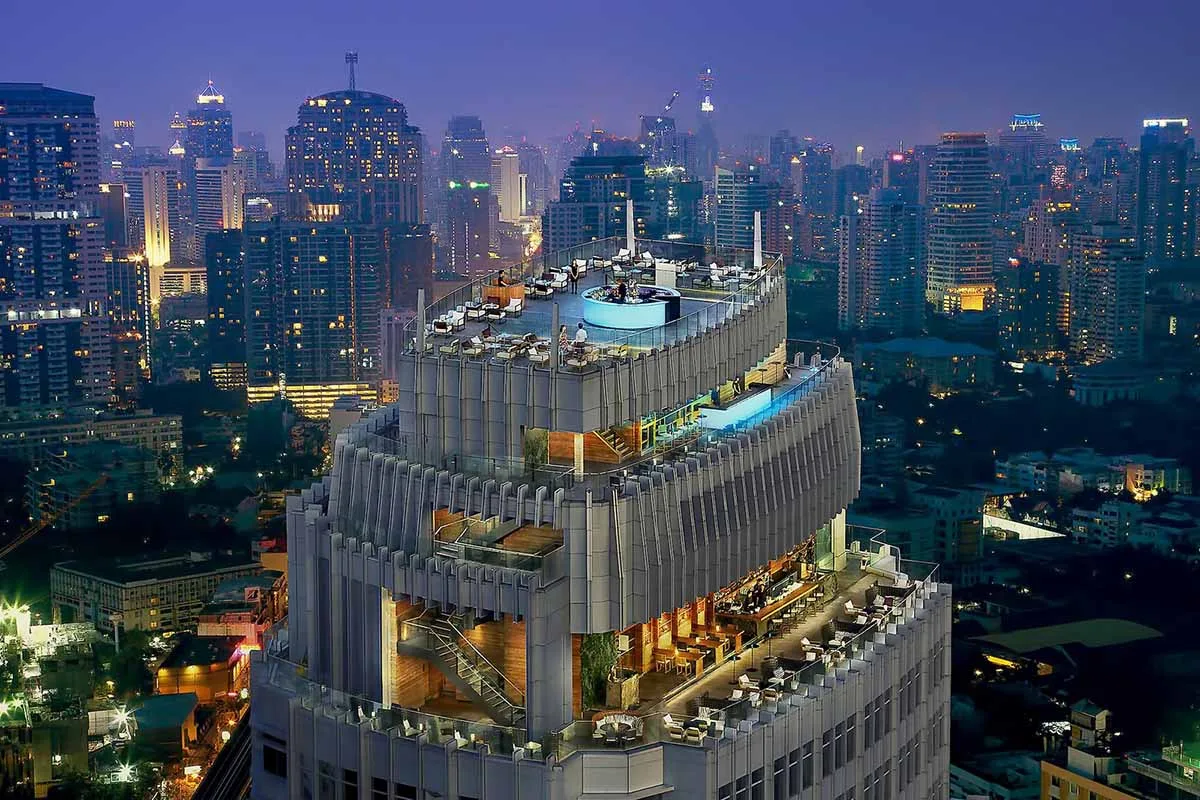
Where to Stay in Bangkok
Bangkok’s hotel scene is as diverse as its street food.
Sukhumvit: For nightlife, shopping, and convenience.
Riverside: Peaceful views and luxury hotels.
Old Town (Rattanakosin): Close to temples and culture.
Ari or Ekkamai: Trendy, local neighborhoods with cafés and boutique stays.
If you’re traveling around Thailand, check my post on Thailand Weather by Month 2026: Your Complete Guide
Bangkok Itineraries — How Many Days Do You Need?
2 Days in Bangkok
Perfect for a quick intro:
Day 1: Grand Palace, Wat Pho, river cruise
Day 2: Chatuchak Market, rooftop dinner, night stroll through Chinatown
4 Days in Bangkok
Now you can slow down:
Add Jim Thompson House, Lumpini Park, and a massage in Wat Pho’s school (the best in Thailand).
1 Week in Bangkok
You’ll start feeling like a local — find your favorite food stall, practice your Thai greetings, and take a day trip to Ayutthaya or Kanchanaburi.
👉 Read more: Ayutthaya vs Kanchanaburi – Which One Should You Visit?.
Funny Fact
In Bangkok, traffic jams can last so long that some drivers meditate in their cars instead of honking. I tried it — it actually works.
Lesser-Known Fact
Bangkok’s full name in Thai is the longest city name in the world — over 160 characters! Locals just call it “Krung Thep,” meaning “City of Angels.”
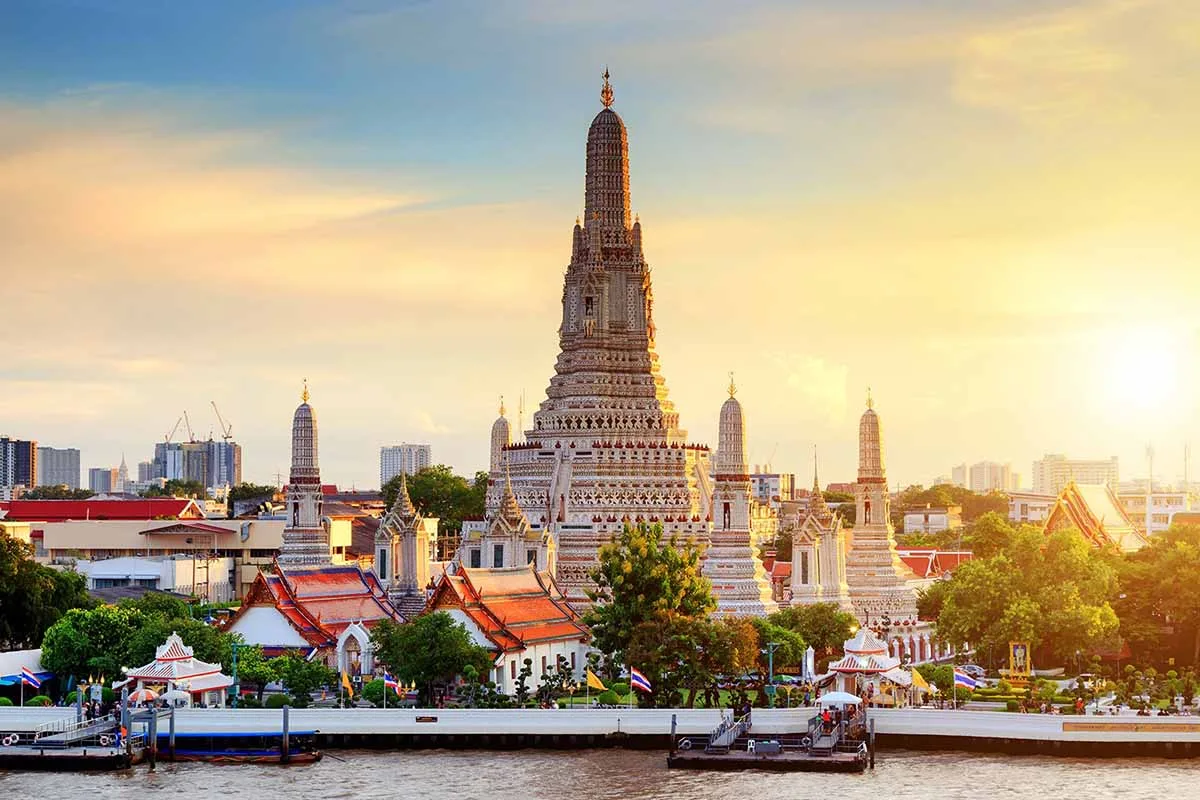
Final Thoughts: Bangkok Isn’t Just a City — It’s an Experience
Bangkok doesn’t try to impress you — it just is.
It’s the smell of incense at dawn, the laughter of street vendors, the sound of monks chanting in the distance while traffic hums below.
It’s a city that teaches you to slow down in chaos — to smile even when you’re sweating in 35°C heat, standing in line for mango sticky rice.
And that’s why I love it.
So, if you’re planning your next trip to Thailand — start here. You’ll leave Bangkok with photos, stories, and maybe even a little bit of its calm chaos inside you.
Bangkok FAQ
Bangkok is famous for:
- Temples & Palaces – Grand Palace, Wat Arun, and Wat Pho.
- Street Food – Legendary dishes like Pad Thai, mango sticky rice, and boat noodles.
- Shopping – From Chatuchak Market to Siam Paragon’s luxury brands.
- Floating Markets – Damnoen Saduak and Taling Chan for a unique shopping experience.
- Nightlife – Rooftop bars, clubs, and Khao San Road’s wild backpacker scene.
Yes! Bangkok is generally safe for tourists, but watch out for:
- Scams – Avoid tuk-tuks offering “cheap tours” or “closed temple” scams.
- Pickpockets – Be mindful in crowded areas like Chatuchak Market and public transport.
- Traffic – Look both ways (twice!) before crossing streets – motorbikes appear out of nowhere!
The best time to visit Bangkok is November to February (cooler weather, less humidity). Avoid March to May (hot season) and June to October (rainy season), unless you love extreme heat or don’t mind occasional downpours.
- Budget Traveler: $30-50 (hostels, street food, public transport).
- Mid-Range: $50-150 (3-star hotels, restaurants, tuk-tuks, and shopping).
- Luxury: $150+ (5-star hotels, rooftop bars, fine dining, and private tours).
- BTS Skytrain & MRT – Fast, cheap, and avoids traffic.
- Taxis – Use Grab app to avoid scams and ensure fair prices.
- Chao Phraya River Boats – Cheap and scenic!
- Tuk-tuks – Fun but negotiate the price first!
- For Temples: Cover shoulders and knees (no shorts, tank tops, or mini skirts).
- For Nightlife: Trendy outfits for bars/clubs (flip-flops aren’t allowed in many places).
- For Daytime: Light, breathable clothes – it’s HOT!
Yes! Street food is safe if you follow these tips:
✔️ Eat at busy stalls (high turnover = fresher food).
✔️ Watch them cook it fresh in front of you.
✔️ Avoid raw seafood or anything sitting in the sun for too long.
No! Tap water isn’t safe to drink. Buy bottled water or use refill stations in hotels and malls.
- Most nationalities get 30-60 days visa-free or visa-on-arrival.
- Check Thailand’s official immigration website for updated visa rules.
- Bang Krachao – Bangkok’s “green lung,” great for cycling.
- Jim Thompson House – A hidden oasis and museum in the city.
- Taling Chan Floating Market – A quieter, more authentic floating market.
- Khlong Bang Luang – A charming artist village along the canal.
- Wat Paknam – A stunning giant seated Buddha that’s less touristy.
Yes, but cash is king for street food, markets, and small vendors. Most big malls, hotels, and restaurants accept credit cards.
- Sukhumvit – High-end bars, clubs, and speakeasies.
- Khao San Road – Backpacker party central.
- RCA (Royal City Avenue) – Big nightclubs and DJ events.
- Rooftop Bars – Sky Bar, Vertigo, Above Eleven for sky-high drinks.
- Thai Silk – Jim Thompson stores or markets.
- Handmade Soaps & Spices – Found in floating markets.
- Thai Snacks – Dried mango, durian chips, and coconut candy.
- Buddha Statues – Remember, taking large ones out of Thailand is illegal!
- Elephant Pants – Because every tourist ends up buying a pair.
- Hello – Sawasdee (krub/kha) (สวัสดี ครับ/ค่ะ)
- Thank you – Khob khun (krub/kha) (ขอบคุณ ครับ/ค่ะ)
- How much? – Tao rai? (เท่าไร?)
- Delicious! – Aroi mak! (อร่อยมาก!)
- Where’s the bathroom? – Hong nam yoo tee nai? (ห้องน้ำอยู่ที่ไหน?)
Spend at least three to four days in Bangkok to see the main attractions — the Grand Palace, Wat Pho, and Wat Arun — and still have time for local food, markets, and nightlife. A week is ideal if you want to explore hidden gems and day trips.
The best street food in Bangkok is found in Yaowarat (Chinatown), Victory Monument, and Silom’s side streets. Try Pad Thai, Tom Yum Goong, and mango sticky rice from family-run stalls — they’ve perfected those recipes for decades.
Don’t miss Wat Phra Kaew (the Emerald Buddha), Wat Pho (Reclining Buddha), and Wat Arun (Temple of Dawn). For fewer crowds, visit Loha Prasat or Wat Saket (Golden Mount) — both offer stunning views and calm vibes.
Bangkok is one of Asia’s best-value capitals. You can enjoy amazing food and comfortable stays even on a budget.
-
Budget travelers: around $30–50/day
-
Mid-range: $70–150/day
-
Luxury: $200+
Use the BTS Skytrain and MRT to skip traffic. For shorter trips, try Grab (ride-hailing app) or river boats for scenic rides. Tuk-tuks are fun, but always agree on the price first!
The best time to visit Bangkok is from November to February, when the weather is cooler and dry. March to May can be hot, while June to October brings the monsoon — but fewer crowds and lush scenery.
Absolutely! Stick to busy stalls with high turnover — locals know the best spots. I’ve eaten street food daily during my stay, and it’s always been fresh, flavorful, and safe.
Visit Bang Krachao, the city’s green lung for cycling; Ari District for cafés and art; Taling Chan Floating Market for authentic weekend vibes; and the Erawan Museum to see a massive three-headed elephant temple.
You can travel comfortably for $40–60 a day, including food, transport, and activities. Mid-range comfort is around $100–150, while luxury travelers can expect $200+ for fine dining and 5-star stays.
Many skip morning temple life — monks collecting alms, the sound of chanting, and locals offering food at dawn. It’s a quiet, beautiful side of the city most tourists never see.
Yes! With great Wi-Fi, endless cafés, and affordable apartments, Bangkok is one of Asia’s best bases for remote workers. Check out areas like Ari, Thonglor, or Ekkamai for a more local vibe.
What about you?
Have you been to Bangkok already, or is it still on your list?
Share your experience or ask me anything in the comments — I’d love to hear your Bangkok stories.